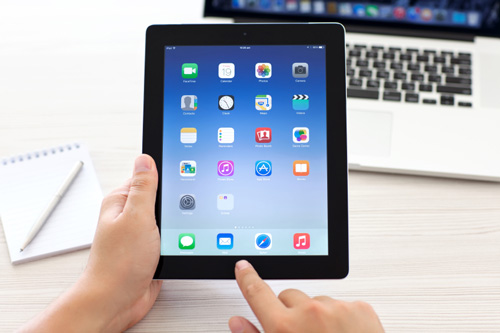 Technology has brought a lot of great things into this world—and we can now add treating children with major illnesses to that list.
Technology has brought a lot of great things into this world—and we can now add treating children with major illnesses to that list.
Modern information technology and telecommunication allows people to interact via devices such as computers, smartphones, or a tablet computer like an iPad. This type of communication helps doctors access their patients from a distance, and it is usually used for patients seeking non-emergency advice. It is a form of telemedicine. It is also called telemedicine when a patient seeks health advice over the phone or email.
In a new prospective observational study published online in the journal Pediatrics, researchers found that clinicians who use telemedicine to diagnose seriously ill children with breathing difficulty and fevers had similar results as doctors making observations at the bedsides of these children.
In other words, the doctors from a distance effectively diagnosed patients almost as well as the patients being observed bedside with the doctor present.
The researchers found the highest degree of agreement between telemedicine and bedside observers was the clinical opinion of whether the patient had respiratory distress or breathing problems. It was such as strong agreement between clinicians that it suggests that clinical opinion is not misinterpreted when telemedicine is used to diagnose a patient.
For the study, the researchers made virtual observations in a telemedicine consultation using iPads with FaceTime apps. In the study, there were 132 kids between the ages of two and 36 months who had originally arrived with fevers to the pediatric emergency department of an urban children’s hospital. The researchers examined the children using the Yale Observational Scale (YOS), which takes into account a quality of crying, differences between skin colors (pink vs. pale), and how the children reacted to being stimulated by a parent.
The study also included 145 children between two months to 18 years with respiratory symptoms like coughing, wheezing, and labored breathing. They were examined with a respiratory observation checklist tool that uses visual signs to make a diagnosis.
The researchers found positive similarities for respiratory distress between the doctors observing patients in-room compared with those using telemedicine.
Doctors using telemedicine is increasingly becoming a popular practice. So much so that the federal government even believes telemedicine is a cost-effective alternative to face-to-face medical care. It is estimated that telemedicine will save $1.8 billion over a 10-year period.
There are also many veterans that prefer telemedicine in the form of telephone or video for a follow-up appointment after surgery rather than visiting a clinic, according to a study published in the journal JAMA Surgery last September.
Telemedicine is also thought to increase access to healthcare to help connect the doctor to the secured electronic medical record of the patient. Patients can also be treated and diagnosed earlier, and in turn can lead to better health outcomes and less cost of treatments.
University of Missouri School of Medicine researchers also found in a study published in December that patients and healthcare providers are satisfied with video-based healthcare. In particular, telemedicine is important to people living in rural areas and who live long distances from certain specialists. It is also a good way to help the doctors establish important relationships with their patients.
Sources for Today’s Article:
Siew, L., et al., “Reliability of Telemedicine in the Assessment of Seriously Ill Children,” Pediatrics, 2015.
Roumie, C.L., et al., “Postoperative Telehealth Visits Assessment of Quality and Preferences of Veterans,” JAMA Surgery, 2015, doi: 10.1001/jamasurg.2015.2660.
“What is Telemedicine?” American telemedicine Association web site; http://www.americantelemed.org/about-telemedicine/what-is-telemedicine#.VrTVnPFn4nM, last accessed February 5, 2016.
